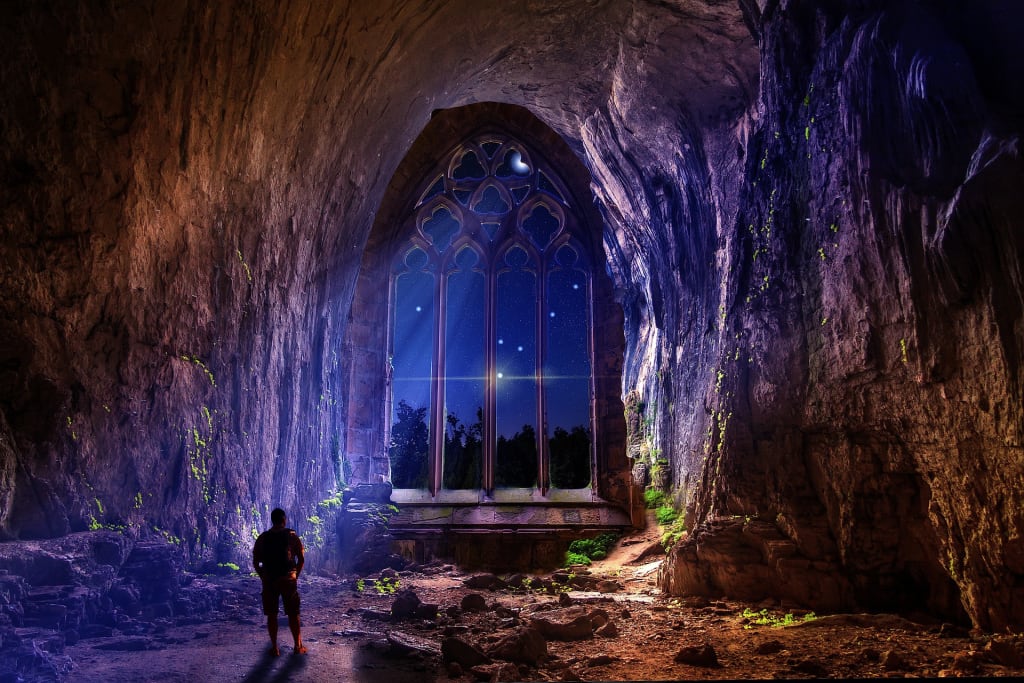
Did you know that a sloth’s metabolism is so slow that algae can grow on its fur? Or that humans are not the only species that can see colours? There are so many things about our planet, Earth, that we still don't understand. It’s a complex and beautiful world where we have explored only a tiny fraction of what it has to offer. We have mapped the surface of the planet, discovered many of its secrets, and learned more about it than ever before. But even so, there are still some weird and wonderful mysteries waiting to be discovered...
Giant clouds of gold and platinum:
Clouds are normally associated with being full of water. But in certain parts of the world they are also full of gold. That’s because the gold particles collect together in tiny droplets of water and are then lifted into the sky by strong winds. The gold then travels miles and eventually settles on the ground. They've been found in many parts of the world including the deserts of the Middle East, the mountains of South America, and in the open ocean. The largest of these gold clouds was seen in the 1980s around the city of Llero in Colombia. It stretched for 25 miles and contained as much as 100 tons of gold. Gold is quite rare on the Earth’s surface as it is too heavy to form naturally. So how does it get into the clouds?
Bigger than the size of Mars:
The largest known single stromatolite in the world is in Shark Bay, Australia. It is around 9 meters high and the same distance across at its widest point. There are some stromatolites that are much larger but they are made up of many smaller stromatolites that have fused together. The largest single stromatolite in the world is located in Hamelin Pool, Western Australia. It is around 35 meters high and 35 meters in diameter. Scientists think that these huge stromatolites were built by an ancient single celled organism that lived in the water. These organisms have since died out.
4th dimension rocks:
Scientists have discovered that the age of rocks can change over time. They have found examples of rocks that have gone from being 2 billion years old to 4 billion years old in just a few years. If rocks could change their age, it might be good news for the many people who mine for metals like copper and uranium. It may be that they have only a certain amount of time to extract the resources before the rocks ‘grow older’ and the minerals become too difficult to mine.
2.8-billion-year-old virus:
Around 25% of the Earth’s surface is covered by permafrost. That’s land that is permanently frozen, so scientists were pretty surprised when they found a virus in Siberia that was more than 2.8 billion years old. It is incredibly rare to find anything on the planet that is so old. Researchers think that the virus may have been frozen underground since the end of the Snowball Earth event. That was a time when most of the world was covered in ice. It would have been a very unpleasant place to live, but fortunately for this virus, it was frozen and preserved. Scientists are hoping to examine the virus to see if it has any medicinal benefits. It may be able to help us fight some of our diseases.
50,000 years old bacteria:
Scientists have discovered bacteria that has been frozen in ice in Antarctica for thousands of years. They were able to grow the bacteria in a laboratory. Once they had done this, they could see that it had evolved. They found that bacteria has evolved in the past 50,000 years and that evolution usually takes a lot longer than this. Bacteria can change quickly if they find themselves in a new environment. They can mutate and grow in new ways that help them survive. This is called adaptation or evolution. Scientists are wondering what has caused such quick and extreme changes in the bacteria. Climate change is a likely candidate.
Mystery foamy substance from a oil rig:
Scientists were recently called in to investigate a strange occurrence at an oil rig. They discovered a strange and somewhat frightening foamy substance that was coming out of the ocean floor near the rig. The substance was made up of bubbles, gas, and oil. It was so unusual that the scientists couldn’t explain what was happening. The scientists believe that the bubbles were caused by something in the sea bed that was releasing methane. The methane was then bubbling up through the water and gathering together to form the foamy substance. The scientists are unsure as to why the methane was being released. They are now trying to work out what could be happening on the sea floor that is causing this unusual occurrence.
Conclusion:
There are so many weird and wonderful things about our planet, Earth. It is a complex and beautiful world where we have explored only a tiny fraction of what it has to offer. We have mapped the surface of the planet, discovered many of its secrets, and learned more about it than ever before. But even so, there are still some weird and wonderful mysteries waiting to be discovered. Now that you know more about our world and the strange things it can produce, you can share your knowledge with your friends and family! They will be amazed at what our planet has to offer.
About the Creator
PP
Psychology, Horror, fiction, education, poet, and about many crazy topics; I love to create content.
Enjoyed the story? Support the Creator.
Subscribe for free to receive all their stories in your feed.






Comments
PP is not accepting comments at the moment
Want to show your support? Send them a one-off tip.